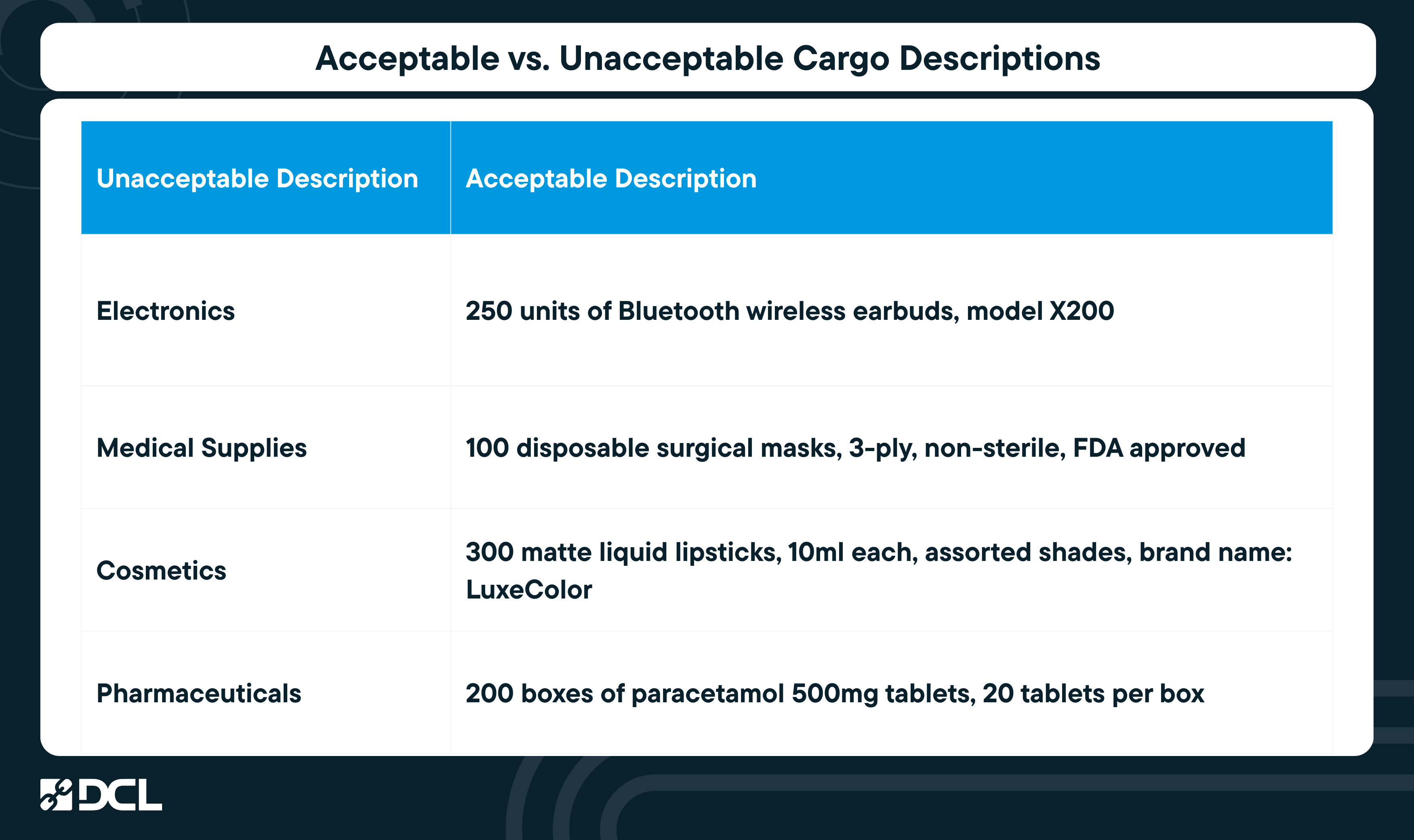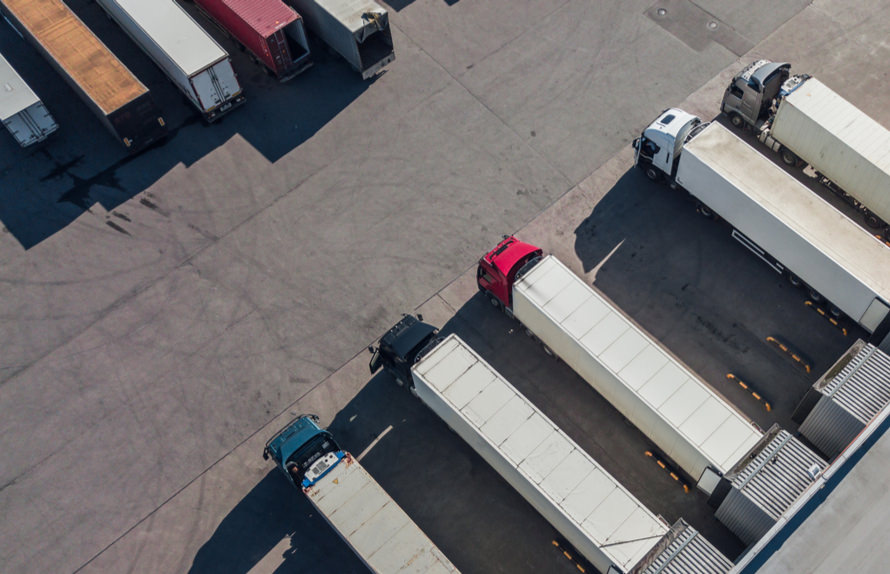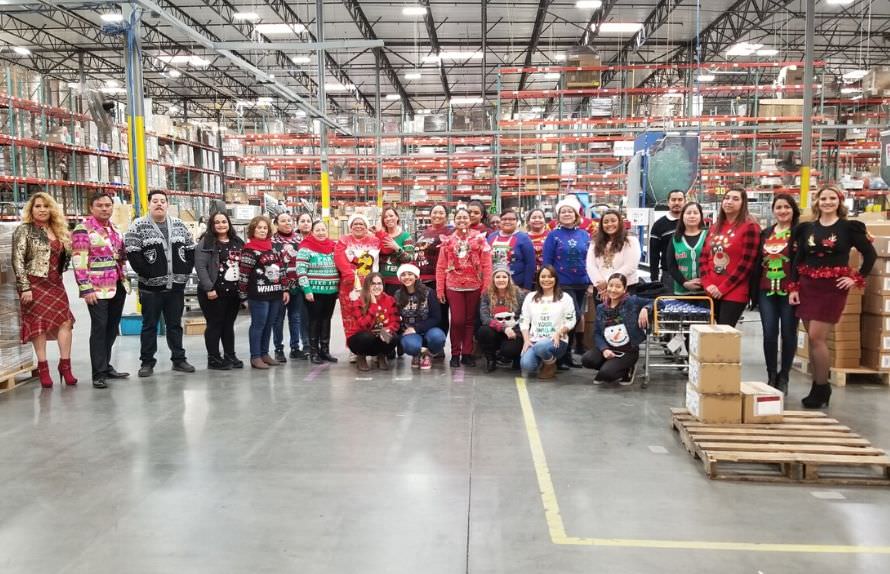
Expanding your business internationally is a huge step, especially for omnichannel brands and online retailers looking to tap into global markets. However, many international shipping can go wrong at customs due to one commonly overlooked detail—imprecise cargo descriptions.
Whether you’re shipping pharmaceuticals, consumer electronic, or daily necessities, getting your cargo description right is critical for smooth customs clearance and avoiding costly disruptions.

Why Cargo Descriptions Matter
When you’re shipping goods internationally, your cargo description is the first thing customs authorities, including US Customs and Border Protection (CBP), look at. Customs documentation like the air waybill, bill of lading, and commercial invoice must include accurate, detailed information. Vague or incomplete descriptions can lead to customs processing delays, cargo holds, fines, or even seizure of goods.
For instance, writing “electronics” on an air waybill might seem sufficient, but to CBP, that’s a vague description. Are you shipping smartphones? Laptops? Gaming consoles? Each has different tariff implications and may require different import licenses or safety documentation.

An acceptable commodity description includes quantity, material, purpose, specifications, and if relevant, the brand name. This level of detail helps freight forwarders, customs authorities, and supply chain partners process your shipment quickly and efficiently.
The Role of Accurate Item Descriptions in Customs Clearance
Your product’s journey begins with a clear and detailed item description on all paperwork. Whether it’s general cargo, household goods, or high-value medical supplies, a precise cargo description supports faster customs processing and reduces the chances of inspection.
Customs officers rely on this information for air cargo advance screening (ACAS), a pre-clearance requirement for shipments entering the US airspace. Submitting poor or vague descriptions may trigger red flags, delaying or even denying entry of your product.
How Shippers and Retailers Can Get It Right
- Understand the Commodity: Work closely with product teams to understand exactly what you’re shipping. If you’re an online retailer, ensure your shipping and compliance teams are on the same page.
- Use Consistent Descriptions Across Documents: The house bill, air waybill, and commercial invoice should all match. Inconsistencies raise questions with customs authorities and slow down customs clearance.
- Leverage HS Codes and Tariff Classifications: Pair your description with the correct Harmonized System (HS) code. This enables the proper calculation of tariffs and taxes and ensures compliance.
- Collaborate with Freight Forwarders: A reliable freight forwarder will help ensure your pallets are documented correctly. They are familiar with customs requirements and can spot red flags before submission.
- Avoid Catch-All Terms: Don’t use terms like “miscellaneous goods” or “assorted products.” Instead, break down the contents by product type and description.
Launching Internationally? Plan Ahead
Introducing a product to an international market isn’t just about marketing and distribution. It’s also about logistics and compliance. From the moment your shipment is prepared, every detail matters—especially when describing what you’re sending. Poorly labeled shipments can lead to delays, increased costs, and ultimately a failed product launch.
If you’re launching a new line of electronic goods or daily necessities, ensure your team understands the compliance needs for each market. Know what’s considered controlled, what may need certification, and how to properly document commodity descriptions. Also, remember that importing pharmaceuticals and medical supplies often requires additional regulatory steps—these should be accounted for early in your planning.
Bottom Line
In today’s global ecommerce world, a successful international product launch hinges not only on a great product, but also on how well you navigate logistics and compliance. That starts with something simple but vital: getting your cargo descriptions right.
Whether you’re a seasoned shipper or a new retailer entering foreign markets, make sure your documentation—air waybill, bill of lading, commercial invoice, and more—is clear, specific, and aligned across all channels. Don’t let something as simple as a vague description stand between your business and global success.
This post was written by Maureen Walsh, Marketing Manager at DCL Logistics. A writer and blogging specialist for over 15 years, she helps create quality resources for ecommerce brands looking to optimize their business.
Tags: International







